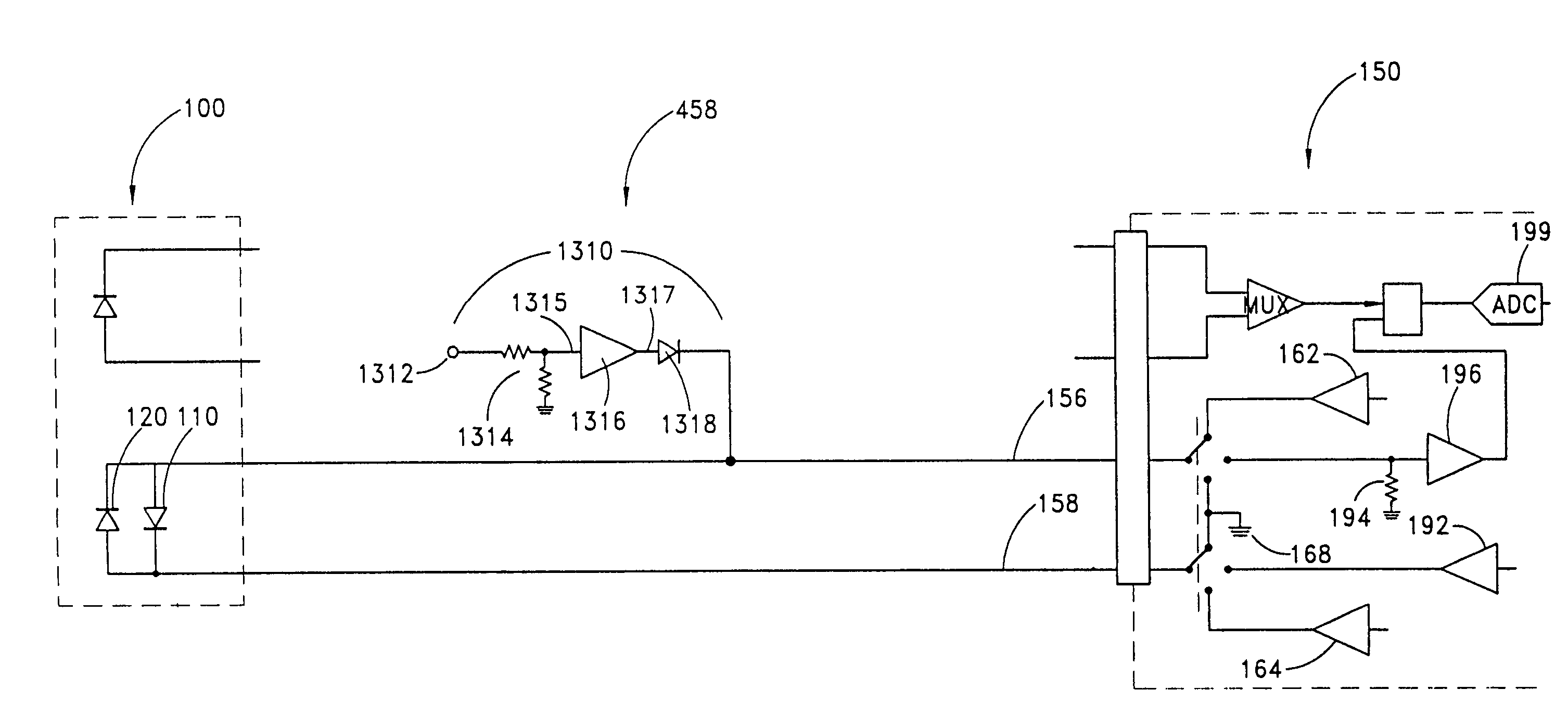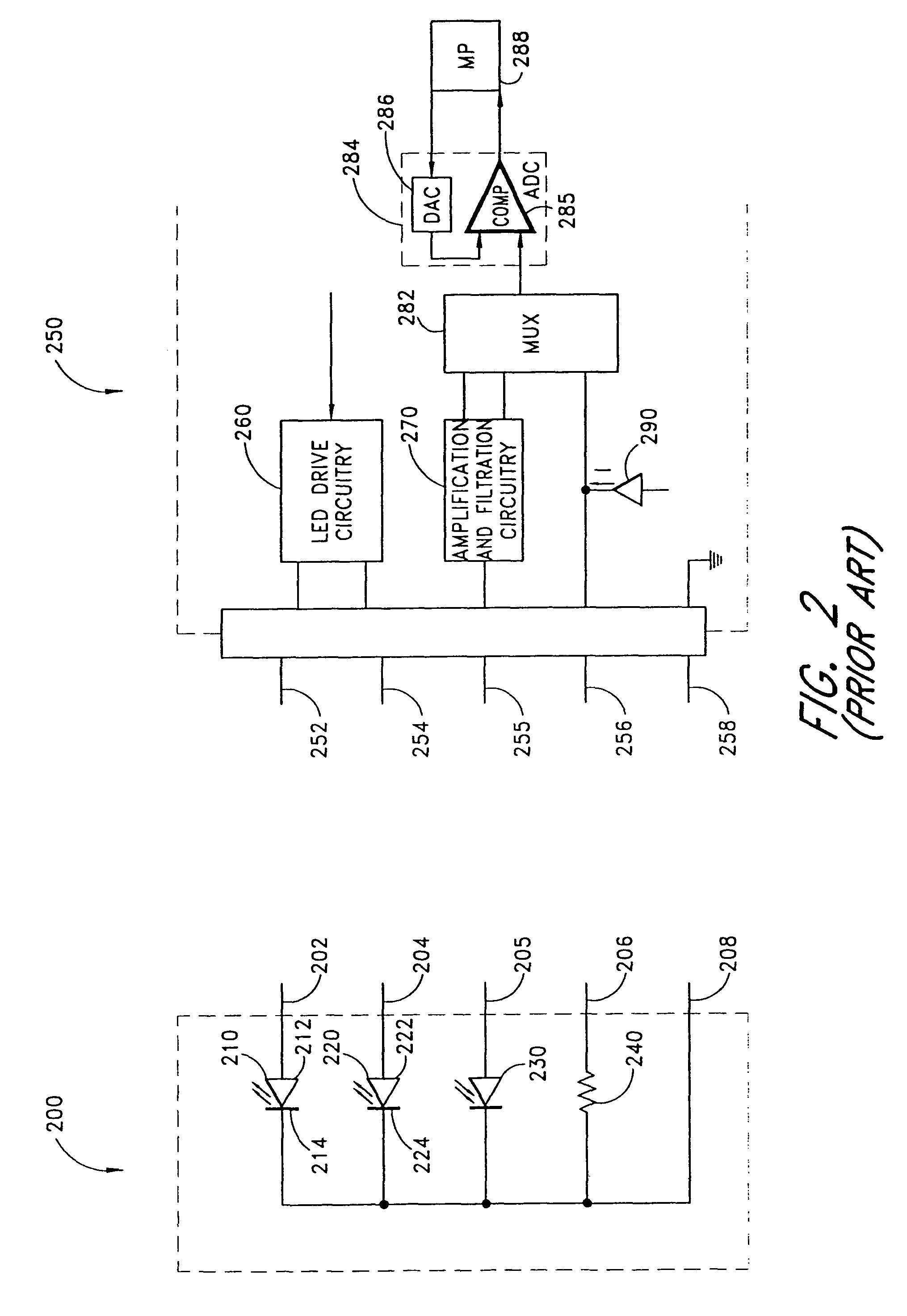Pulse oximetry sensor adaptor
- Summary
- Abstract
- Description
- Claims
- Application Information
AI Technical Summary
Benefits of technology
Problems solved by technology
Method used
Image
Examples
Embodiment Construction
[0045]FIG. 4 shows a functional block diagram of a sensor adapter 400 for interconnecting a sensor 402 to an incompatible monitor 404 in a pulse oximetry system. Interconnecting the monitor light source driver 410 with the sensor light source 412 are a light source configuration 414 adapter and a drive limit 418 adapter. The light source configuration 414 element adapts the light source driver 410 to the particular configuration of the sensor light source 412, such as two-wire, back-to-back LEDs, three-wire, common-anode LEDs and three-wire, common-cathode LEDs. The drive limit 418 element increases or decreases the current of the light source driver 410 to adapt to the requirements of the sensor light source 412.
[0046]Also shown in FIG. 4 is an active gain 434 element, which adapts the sensor light detector 432 to the monitor signal conditioner 430. Active gain 434 sets the amount of amplification of the signal from the sensor light detector 432 that occurs in the monitor signal co...
PUM
 Login to View More
Login to View More Abstract
Description
Claims
Application Information
 Login to View More
Login to View More - R&D
- Intellectual Property
- Life Sciences
- Materials
- Tech Scout
- Unparalleled Data Quality
- Higher Quality Content
- 60% Fewer Hallucinations
Browse by: Latest US Patents, China's latest patents, Technical Efficacy Thesaurus, Application Domain, Technology Topic, Popular Technical Reports.
© 2025 PatSnap. All rights reserved.Legal|Privacy policy|Modern Slavery Act Transparency Statement|Sitemap|About US| Contact US: help@patsnap.com



